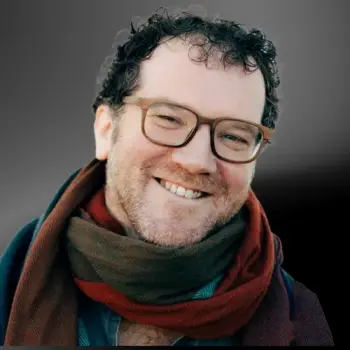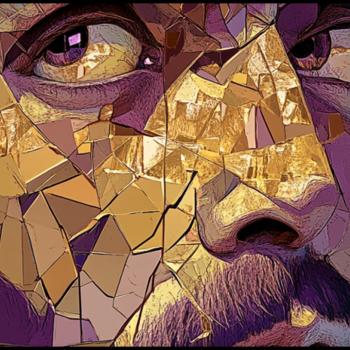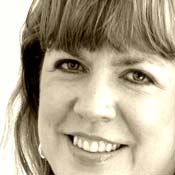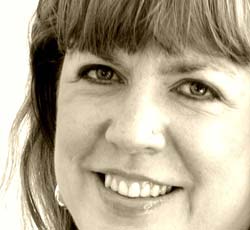 Christine Valters Paintner's new book The Artist's Rule: Nurturing Your Creative Soul with Monastic Wisdom invites readers onto the path of the "inner monk" and the "inner artist" by offering practices for deepening both their spiritual and creative lives. Here, fellow artist and spiritual director Tim Mooney talks with Christine about her new book and the interplay between contemplation and creativity. (Visit the Patheos Book Club to read more about Christine and her book.)
Christine Valters Paintner's new book The Artist's Rule: Nurturing Your Creative Soul with Monastic Wisdom invites readers onto the path of the "inner monk" and the "inner artist" by offering practices for deepening both their spiritual and creative lives. Here, fellow artist and spiritual director Tim Mooney talks with Christine about her new book and the interplay between contemplation and creativity. (Visit the Patheos Book Club to read more about Christine and her book.)
Many people say they don't have a creative bone in their body. But you have a different take on that—why is this book important for "regular" people who may not consider themselves either monk or artist?
I believe that we all have a longing to make meaning of our lives, to create something that expresses our own deep longing and vision. The monk within is our inner longing for contemplative presence and spaciousness, the hunger we each have to discover the holy in each moment. The artist within is our inner desire for creative expression, to give form to our deeply felt experience, and to make things of beauty. Whether or not we live in a monastery or spend each day in an art studio, I think we can each identify the longings the inner monk and artist represent within ourselves. This book is an invitation to anyone who wants to cultivate these aspects more intentionally.
You speak of "resistance" in the book's introduction. Can you say more about that and how it might impact your readers?
We all encounter resistance in daily life to both the ordinary tasks as well as our bigger dreams. Resistance is an inner dynamic that can create a kind of confusion about what we most deeply want. So we may say that we want to be a writer, but we experience all kinds of resistance to actually sitting down to the blank page each day. I think this largely happens because the closer we come to what we most treasure, the more vulnerable we feel. It is a much bigger risk to make a sacrifice for a big dream because of all the unknowns, so we often settle for not following that path because then the risk isn't as high.
Living a creative and meaningful life is hard work because it means we have to stay awake to our own experience and not abandon ourselves.
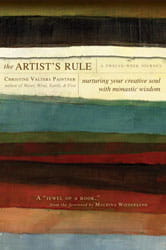 You are an advocate of creative expression as a means of transformation and healing. Theologian Trevor Hart cautioned against too much creativity, calling for "responsible creativity." Are there dangers inherent in creative expression?
You are an advocate of creative expression as a means of transformation and healing. Theologian Trevor Hart cautioned against too much creativity, calling for "responsible creativity." Are there dangers inherent in creative expression?
I would agree with Hart's call for "responsible creativity." Creativity alone is a neutral force that can be engaged for transformation and healing, but that can also be harmful if we create destructive things. As humans we continuously create new ideas and things in the world.
The gift of bringing creativity into dialogue with a tradition like monastic spirituality is that we have the wisdom of 1500 years of practice. The call to be in community is at the heart of the monastic way. Creativity heals when it is witnessed and affirmed by a community. This is why so much of my work is to support those in the ministry of spiritual direction as they bring the arts to those they journey with; the creative process is held and witnessed by another.
What's your take on what it means to be created in the image of God? And how would describe the "Fall" from your perspective?
I consider God to be the Original Artist. It is in God's nature to create. We each carry a reflection of that essential nature within us, so for me the "Fall" is about how we fall asleep to this divine indwelling. We come to believe that we are disconnected from God, from each other, from nature. This is one of the great lies we tell ourselves and is perpetuated in many ways in our culture—through class warfare and oppression of others, through our ravaging of the environment, through any theology that tells us we are too far from God to ever be whole again.
We catch glimpses of this wholeness through spiritual practice, we engage in disciplines that help us to awaken to this radical union. The mystics describe God as dwelling within each of us and when we are able to make the long, arduous journey of shedding all of the distractions and false perceptions about ourselves and who we truly are, then we experience a radical kind of peace, equanimity, and sense of union. We discover that we are responsible for our brothers and sisters and for the whales and beetles because our own lives are inextricably woven together with theirs.
